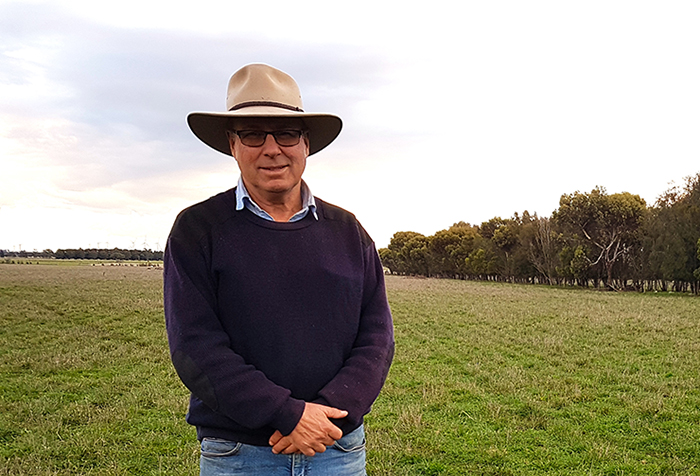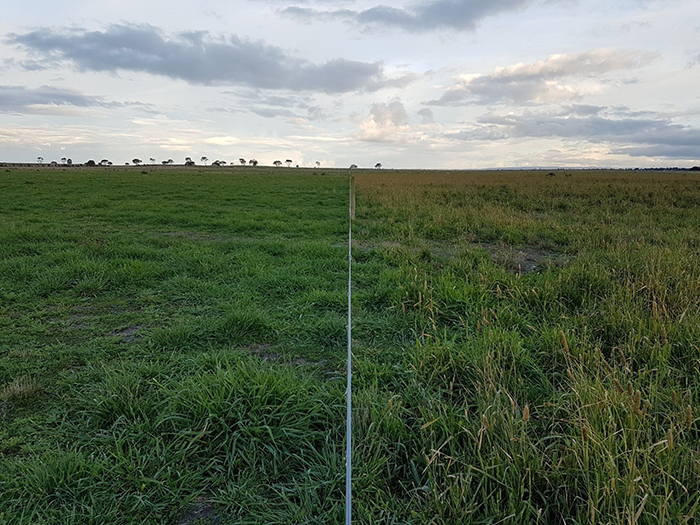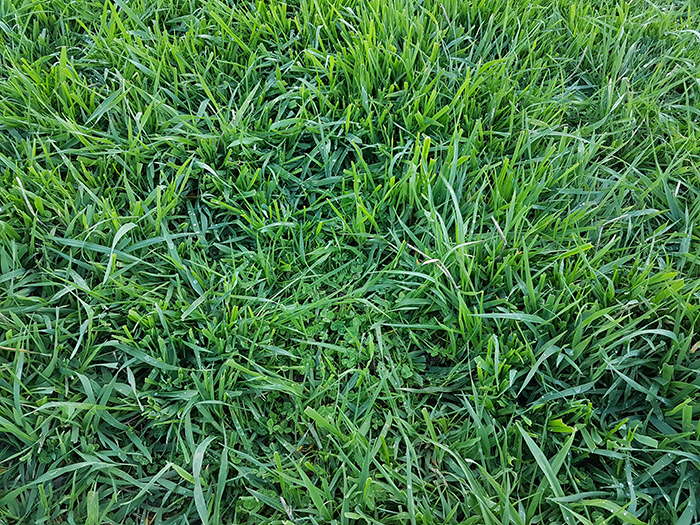
David Kininmonth at 'Mt Hesse', western Victoria.
The use of grazing charts, calendar trigger points and ewe pregnancy scanning has allowed western Victorian producer David Kininmonth to effectively match stocking rate to carrying capacity throughout the year.
Managing 18,000 breeding ewes, 9,000 head of dry stock and an opportunistic cropping operation across 3,550ha requires a well-thought-out grazing plan and a commitment to monitoring, David said. Here's a look at how he manages his pastures in each season to ensure maximum performance.
Tools of the trade
After attending a Grazing for Profit course, David decided to utilise one of the tools covered in the workshop – grazing charts – to track whether he's overstocked or understocked, and match stocking rate to carrying capacity.
Measuring weight gain, DSEs/ha and pasture growth at the start and end of the season, as well as pregnancy scanning, helped him to understand the actual production and therefore plan appropriately.
David also uses calendar trigger points, such as 20 May, to make decisions on carrying capacity.
"This year, we needed to drop our carrying capacity by one lambing ewe per hectare, so we sold 3,500 wethers," David said.
"Matching stocking rate to carrying capacity is something that's difficult to get right, so I work very hard at it."
Autumn
During autumn, the Kininmonths avoid using management interventions that reduce feed on offer.
"What we do in autumn affects carrying capacity over the winter, which affects our profitability," David said.
He aims to have residual dry matter grazed down to 1,000kg DM/ha by May to allow clovers to germinate.
"The old phalaris straw has an allelopathic effect on sub-clovers, so we want to get rid of as much as we can.
"We'll put large mobs onto it for about a week and we'll take it right down," David said.
Phosphorous fertiliser is spread aerially after the break so urea can be added and spreading costs are reduced.
"We add a bit of urea to phosphorus fertiliser if we need a boost – the plants are already up and running and so can utilise the urea," David said.
"If we had to put on nitrogen later, it would be a huge cost to the business. We do a lot by air because we can get it done in a few days and it's cost-effective."
Throughout autumn, stock are moved to David's 'haystack' paddocks (paddocks which are destocked and allowed to run up to head in spring before being used to feed stock through late summer/autumn), which allows the managed pastures to rest and grow to their target of 1,300kg DM/ha by 1 June.

Haystack paddocks (right side) are allowed to go to seed before being used to feed stock in late summer/autumn.
Winter
David likes to have between 1,300–1,500kg DM/ha at the start of lambing on 22 June, which is the maximum amount needed to carry 8– 9 ewes/ha right through winter.
The growth rate is driven by winter active perennial grasses and clovers that've put nitrogen in the soil in the previous year and the use and timing of fertiliser.
"We've had foot abscess problems where paddocks have been up around 1,800kg DM/ha," David said.
"Having too much feed on offer is like being under-grazed but overstocked.
"If you've got 1,300kg DM/ha, the sheep will graze the whole paddock – but if it's 1,800kg DM/ha, they graze a small area, so when they lamb, they're all jammed up together.
"The biggest breakthrough in my management was realising that our cold, wet winter rainfall period was not our biggest limitation but our greatest opportunity.
"Combining soil nutrition and smaller paddock sizes with winter active perennials that have amazing growth during our most reliable rainfall period and bringing forward our lambing dates has given us the biggest bang for our buck without a doubt."

Spring
The Kininmonths aim for 30% clover and 70% desirable grass over the whole year but try to maximise clover in spring for livestock growth.
"We use large mobs for short periods of time, then put our young stock on to get the production we need," David said.
"Last year, we got a really big spring and spray-topped because the phalaris got away – so to retain sub-clover in those paddocks, we really needed the livestock to eat it down."
All the developed country is carefully managed, but David has a few large 'haystack' paddocks containing old Australian phalaris that are let go to seed.
"We'd rather graze as much as we can really well and let the pastures that are not as well-developed just run up and destock them," David said.
Summer
Pastures are feed tested in late spring/summer to catch declining energy levels so they can be utilised before feed deteriorates.
"South of the divide, when feed starts go off, it goes right off an you're left with straw rather than plants that have high nudtritive value," David said.
"You can't just add a bit of urea and away you go – it just doesn't work in our environment."
Spray-topping is a tool used to manage problematic weeds and help preserve feed quality.
"We don't cut hay or silage, relying mostly on grazing pressure to manage weeds and herbicide manipulation opportunistically," he said.
"Herbicide use is pretty limited, but the grazing management is everything as its cheap and we own the stock."
With this grazing management, Holdfast GT phalaris is grazed hard and then let run up to seed, which David said helps avoid getting clumpy pastures.
After this, they crash graze down to 1,200kgDM/ha to remove the residual dry matter, before aiming to keep 90% ground cover in summer.
Paddock sizes are mostly between 8–14ha, with some 20ha and 30ha paddocks to allow more control over the grazing system. All paddocks are fenced according to land class.






